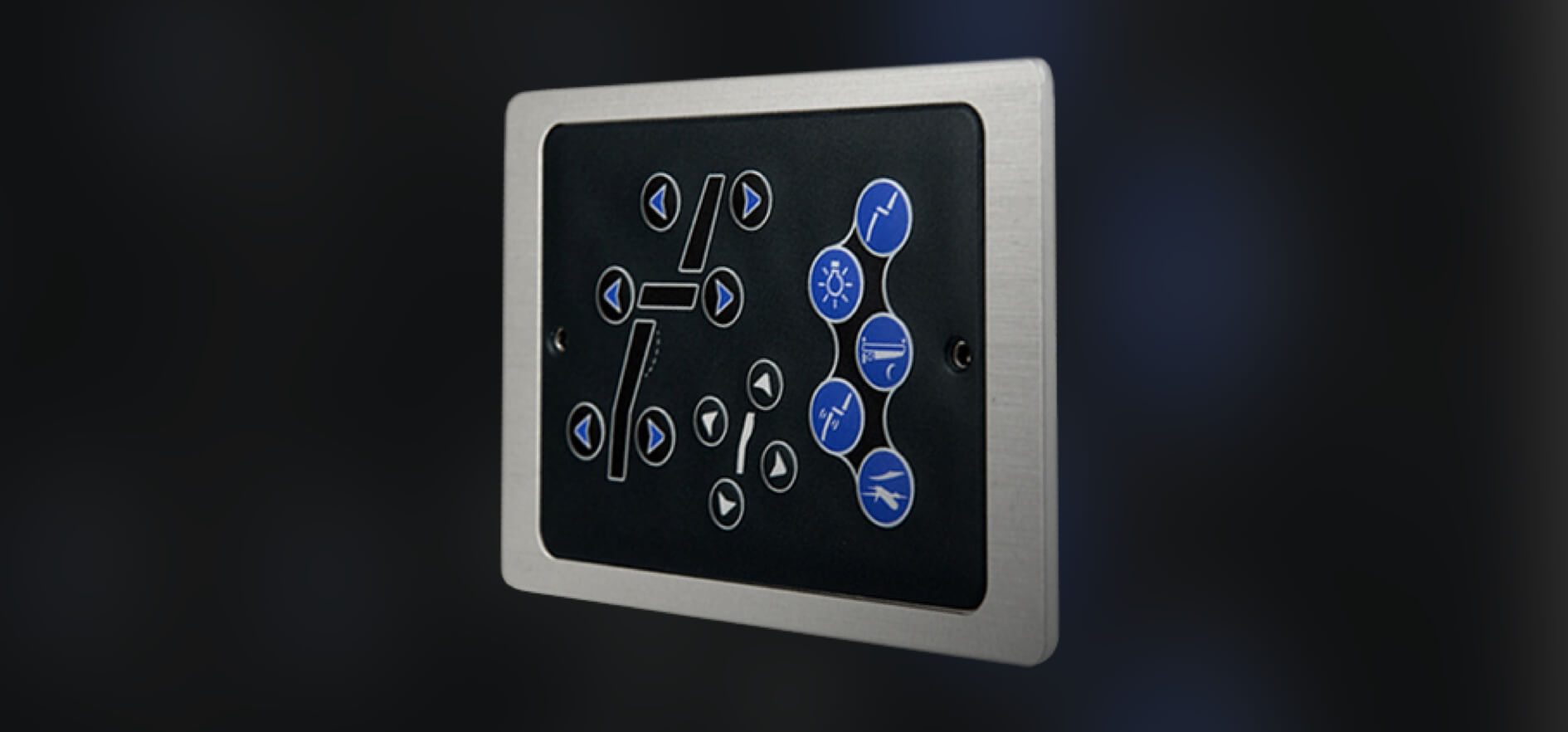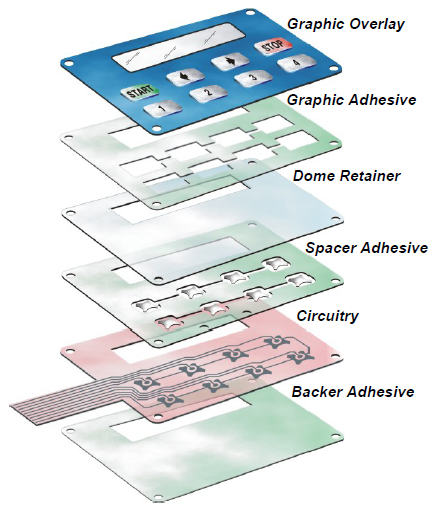Why Engineers Select Membrane Switches for Their High Performance and Long Life
The Ultimate Resource on Membrane Switches: Design, Capability, and Applications
Membrane changes work as a fascinating crossway of style and capability, playing a pivotal role in modern customer interfaces throughout numerous fields. This source unloads the important parts that add to their effectiveness, including graphic overlays and circuit traces, while likewise illuminating the systems behind their stress activation. As we explore the diverse applications of membrane buttons, it comes to be noticeable that their versatility and toughness are critical in environments varying from healthcare to customer electronic devices. Nonetheless, the subtleties of their design and functional principles may disclose also much deeper understandings worth taking into consideration.

Comprehending Membrane Layer Switches
Membrane layer switches are a type of interface modern technology widely used in different electronic gadgets, identified by their slim, flexible layout and functionality. These buttons include several layers that consist of graphic overlays, sticky layers, and wiring, allowing a compact and effective user interface for users. They can be discovered in devices, medical gadgets, and commercial control panels, giving a reputable method for individual communication.
Among the primary benefits of membrane layer switches is their ability to withstand impurities such as dust and wetness, making them ideal for environments where toughness is necessary. Their inconspicuous design permits seamless assimilation right into different applications, while the customizable graphic overlays improve customer experience by providing clear visual responses. In addition, membrane layer buttons can suit a range of modern technologies, such as tactile feedback and backlighting, further enhancing their usability.
The manufacturing process for membrane layer switches over commonly entails display printing, die-cutting, and lamination techniques, guaranteeing precision and uniformity in production. Overall, membrane layer changes represent a efficient and versatile solution for modern-day electronic devices, incorporating performance with visual allure in individual interface design.
Key Components and Layout Aspects
A variety of vital components and layout aspects integrated to develop a reliable membrane layer switch. At the core, the visuals overlay serves both aesthetic and functional objectives, using a straightforward user interface while securing internal elements from environmental aspects. The selection of products, commonly polyester or polycarbonate, influences sturdiness and tactile feedback.
Underneath the overlay, the sticky layer guarantees the button adheres safely to the substrate, which can be glass, metal, or plastic. The spacer layer is crucial, as it preserves the essential gap between the overlay and the circuit layers, enabling for reliable actuation. Membrane Switches. Circuit traces, typically made from conductive ink or adhesive, are published on a versatile substrate, allowing electric signals to be sent when pressure is used
Design considerations likewise include the setup of responsive domes or embossing that provide physical comments to the individual, boosting the total experience. Furthermore, the design and spacing of the switches must be maximized for convenience of use, ensuring that individuals can browse the user interface intuitively. Overall, these elements and style components work synergistically to develop a reputable, practical membrane layer button tailored to certain applications.
Capability and Procedure Device
At the heart of efficient capability for membrane layer switches over exists their operational system, which promotes customer communication via an easy yet effective style. These switches operate the concept of stress activation, where a user uses pressure to an assigned area of the switch (Membrane Switches). This action compresses the layers of the switch, completing an electric circuit that sends out a signal to the linked gadget
The building usually includes a top visuals layer, a glue spacer layer, and a lower circuit layer, which collectively create a durable interface. When pressure is used, the top layer breaks down against the lower circuit layer, allowing conductive traces to connect. This design not just allows clear responsive responses however also ensures toughness and integrity, as the switches are typically resistant to dust and moisture.
Moreover, the convenience of membrane switches allows for integration with numerous innovations, consisting of LED indicators and microcontrollers, enhancing their performance. By offering a structured interface that lessens mechanical wear, membrane switches over stay a favored choice in applications varying from consumer electronic devices to industrial tools, making Get the facts sure ideal efficiency and user complete satisfaction across diverse atmospheres.
Sorts Of Membrane Buttons

An this contact form additional considerable category is illuminated membrane switches, which include backlighting to improve exposure in low-light problems. These buttons are frequently utilized in control panels and dashboards where clear exposure is necessary.
In addition, there are custom membrane layer switches designed to meet specific dimensional, graphical, and functional demands. These modifications can consist of special shapes, colors, and designs, enabling seamless integration into different devices.

Applications Across Various Industries
Just how do membrane switches enhance capability throughout diverse sectors? These functional elements are essential to numerous applications, supplying streamlined interface and robust performance. In the clinical market, membrane layer switches play a critical function in devices such as analysis devices and patient monitoring systems, where integrity and simplicity of cleansing are vital. Their capability to withstand harsh settings makes them excellent for research laboratory instruments and medical devices.
In the auto sector, membrane buttons are typically made use of in dashboards and control panels, giving user-friendly controls that boost driver security and ease. The consumer electronic devices field also gains from their adjustable and light-weight features, enabling sleek designs for smartphones and home appliances.
Additionally, membrane layer buttons find applications in industrial automation, where they contribute to effective machinery operation and tracking systems. Their resistance to dirt and dampness makes certain functionality in demanding conditions (Membrane Switches). Furthermore, the food and drink sector utilizes membrane layer buttons for tools control, where health and sturdiness are critical
Verdict
In final thought, membrane layer changes represent an important development in customer interface innovation, defined by their distinct layout and capability. The adaptability Extra resources of membrane switches over facilitates their application across varied markets, from medical tools to consumer electronics.
Membrane layer changes offer as a fascinating crossway of design and performance, playing a critical function in contemporary customer interfaces across numerous markets.Membrane layer switches are a kind of user interface modern technology commonly utilized in different digital gadgets, characterized by their slim, versatile style and functionality.At the heart of effective capability for membrane layer switches over exists their operational system, which helps with customer interaction with a simple yet effective design. These switches run on the concept of pressure activation, where an individual uses force to an assigned area of the button.In conclusion, membrane layer switches over represent an important development in customer interface technology, defined by their one-of-a-kind design and functionality.